11 Native Plants That Support Pollinators Into Late Fall
Many gardens grow quiet as the weather cools, yet there are native plants that continue to feed bees, butterflies, and other helpful insects well into the season. These plants offer nectar and pollen when most blooms have already faded, which supports pollinators as they prepare for winter. Adding them to a garden helps create a space that stays lively and useful during the later months. For anyone hoping to keep their outdoor area buzzing with activity, these reliable choices can make a meaningful difference.
This post may contain affiliate links, which helps keep this content free. Please read our disclosure for more info.
Asters
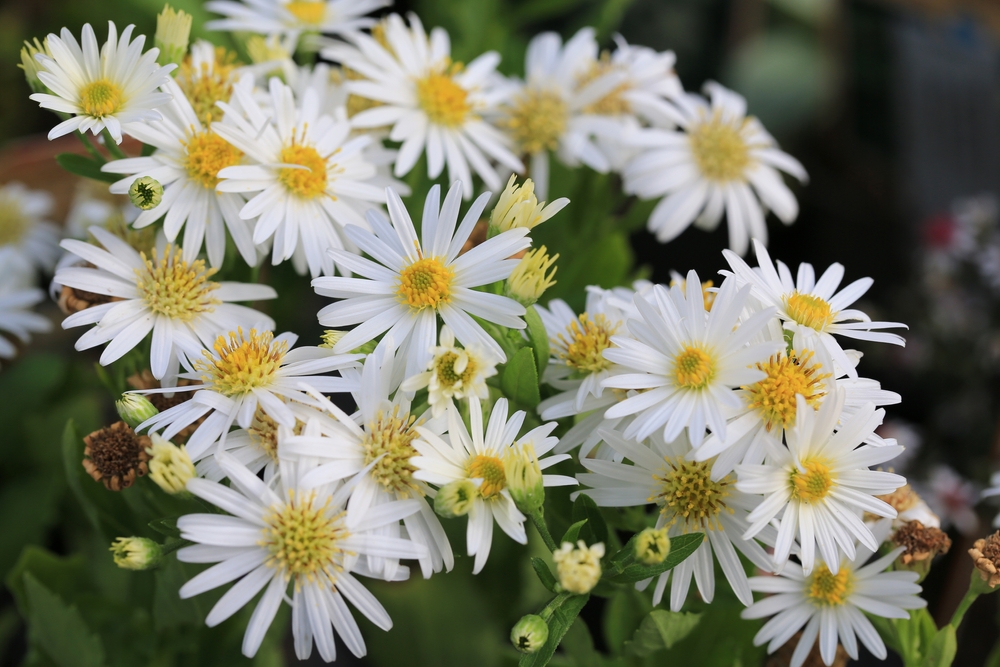
Asters offer dependable blooms late into fall, giving bees and butterflies a steady source of nectar when many plants have already faded. Their star-shaped flowers stay vibrant through cooler nights, drawing pollinators that need energy before winter sets in. These blooms help migrating butterflies and late-foraging insects find nourishment at a time when options grow scarce. Their natural timing makes them a key part of a fall-friendly garden.
Many native asters grow well in different soils, which makes them easy to use in home landscapes. Their long season of color fills gaps that appear as other flowers decline. When planted in clusters, they create an inviting space that draws a variety of pollinators. Their reliability helps sustain insects that need support late in the year.
Goldenrods
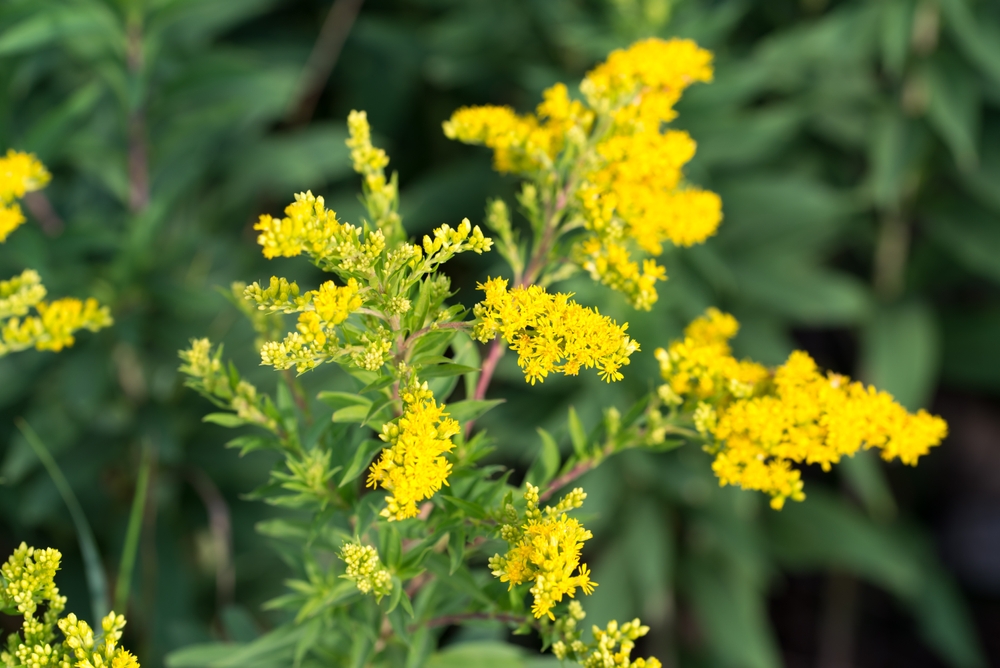
Goldenrods shine during the later months of fall and offer abundant nectar for bees, migrating butterflies, and other insects. Their tall stems and bright plumes appear just as food sources begin to decline. This makes them vital for pollinators that require energy before the cold months roll in. Their timing and hardiness keep fall gardens lively with movement.
Many gardeners misunderstand goldenrods because they think these plants cause allergies, yet their pollen is too heavy to drift through the air. This makes them safe and beneficial additions to gardens and open spaces. Their dense flowers draw clusters of insects that continue searching for nourishment late in the season. These plants help fill the garden with color and activity when most others are nearing the end of their cycle.
Joe Pye Weed

Joe Pye weed offers tall, fluffy flower heads that continue supplying nectar through the tail end of fall. The soft pink clusters attract butterflies that migrate long distances and need dependable feeding spots. Bees also visit these blooms frequently, taking advantage of the plant’s height and accessibility. Its generous flower production creates a busy scene even as cooler air settles in.
This native plant thrives in moist soils and open spaces, making it a strong choice for meadows and naturalized areas. Its height adds structure while giving pollinators a dependable foraging area. Even after the flowers fade, the seed heads remain attractive and provide shelter for wildlife. Joe Pye weed keeps fall habitats active when many other plants grow quiet.
Coneflowers
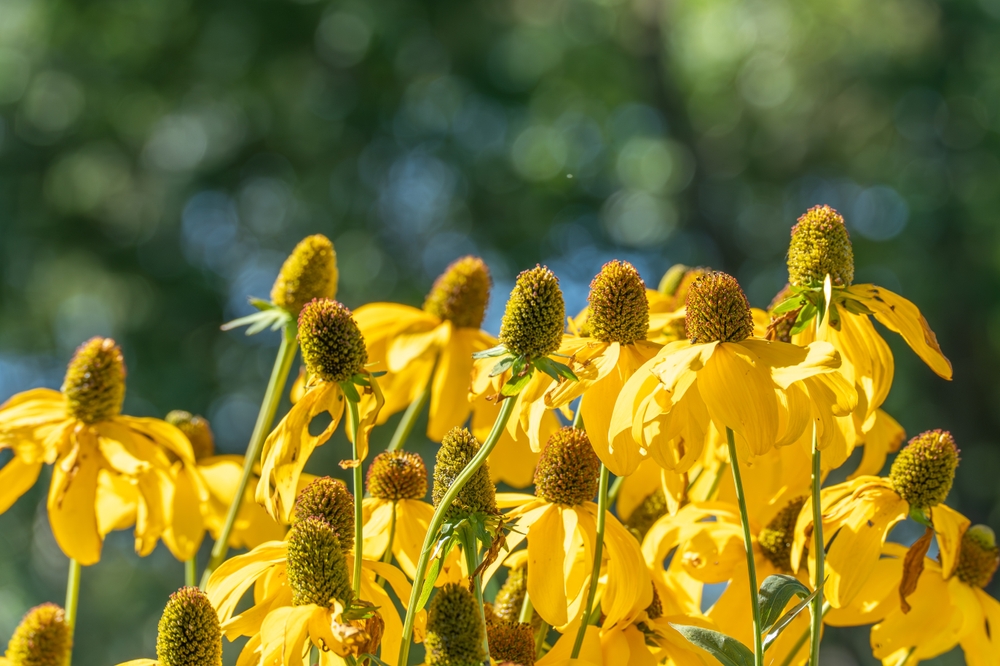
Coneflowers hold onto their blooms longer than many summer perennials and continue to support bees late into fall. Their central cones remain full of pollen even as the petals begin to soften. This extended period of availability helps insects gather resources at a time when food becomes scarce. Their bright colors continue to draw butterflies during early fall migrations.
Once the flowers dry, the seed heads serve as food for birds, which adds another layer of seasonal value. These native plants handle both heat and cooler temperatures with ease, keeping pollinators engaged longer. Their sturdy stems stay upright well into fall, holding the cones at a height that is easy for insects to reach. Coneflowers bring steady support to late-season habitats.
New England Asters

New England asters bloom later than many other aster varieties, making them especially valuable in fall gardens. Their vivid purple or pink flowers stand out and create a consistent feeding station for bees. Monarch butterflies rely on these blooms during migration, stopping to gather energy before continuing south. The extended bloom time makes them critical during the late season.
These asters grow tall and full, forming clumps that provide both shelter and food. Their sturdy stems hold up well through light frost, keeping the flowers accessible longer. Many gardeners appreciate how they attract a wide range of pollinators during a time of year with fewer food sources. Their presence brings important activity to fading autumn landscapes.
Blue Wood Asters
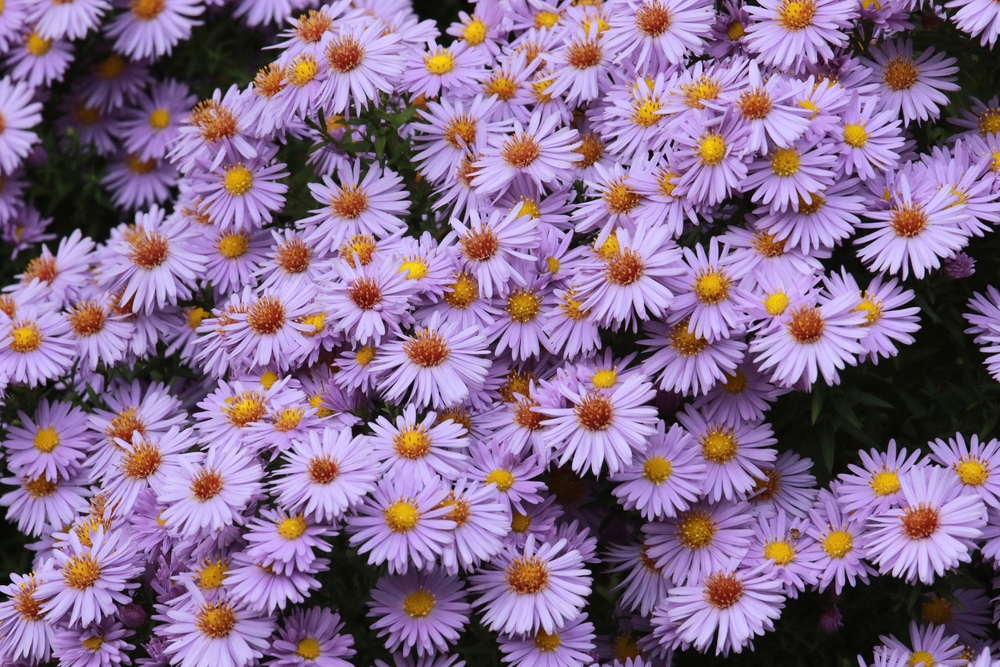
Blue wood asters fill shaded spaces with pale lavender blooms that continue late into fall. Bees use the flowers heavily, especially in the cooler mornings common late in the season. The soft color of the petals contrasts nicely with fallen leaves, giving pollinators a clear place to land. Their long bloom period offers steady nourishment for insects preparing for winter.
These asters thrive in woodlands and natural settings, creating a relaxed and inviting look. Their adaptability allows them to spread gently without overwhelming other plants. As they form loose drifts, they draw a variety of insects that travel through wooded areas. Blue wood asters bring reliable support where sunlight is limited.
Swamp Milkweed
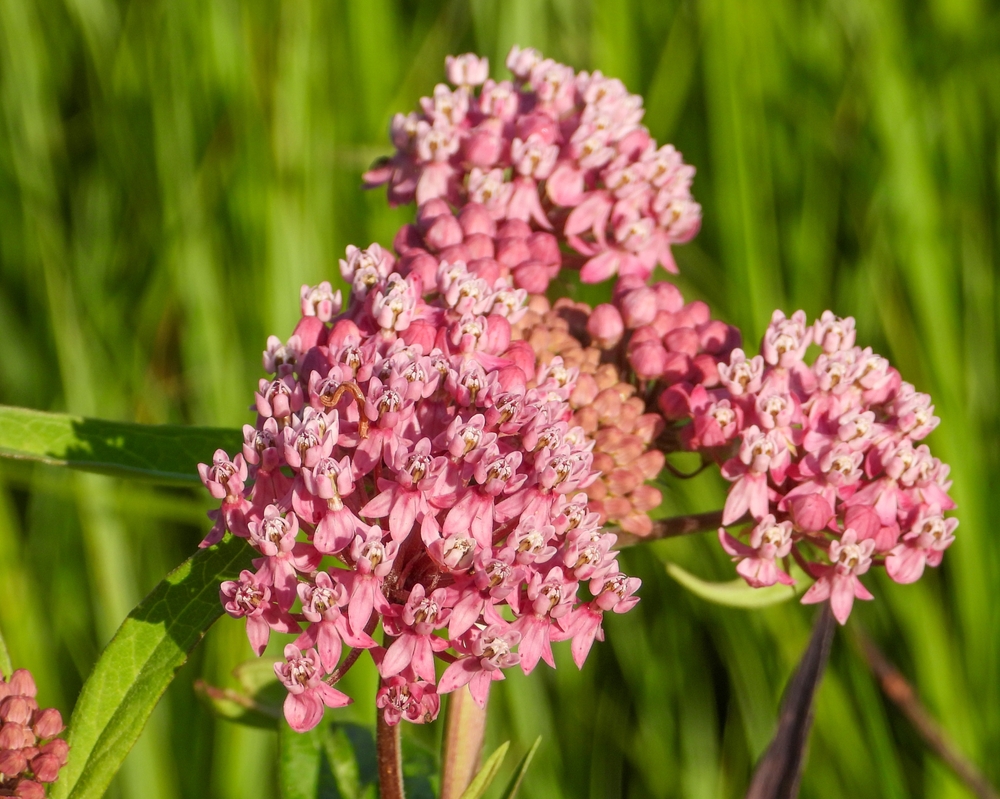
Swamp milkweed continues to bloom into early fall and supports monarch butterflies that use it as a nectar source. The rosy clusters attract bees that rely on late-season flowers for energy. This plant grows in wetlands and damp garden spots, offering a natural feeding station where water is close by. Its fragrance helps pull insects from a distance.
Even after the blooms fade, the plant produces seed pods that open to release silky seeds on the wind. This cycle keeps the plant spreading through suitable spaces. Its long-lasting flowers help sustain monarchs during their seasonal journey. Swamp milkweed plays an important role in late-season pollinator gardens.
Blue Mistflower
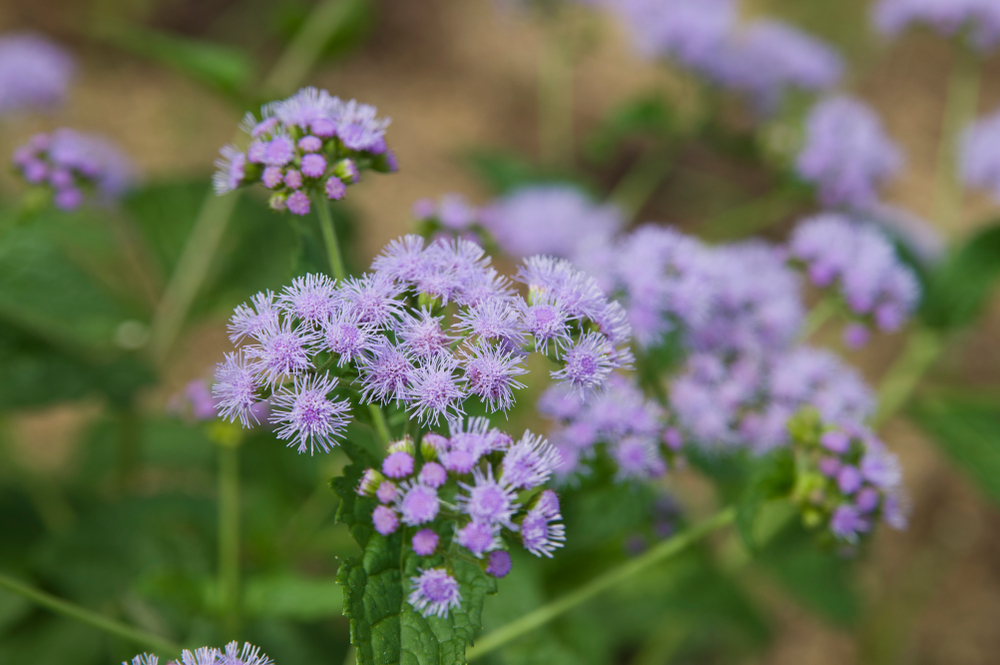
Blue mistflower produces soft clouds of lavender-blue blooms that remain attractive well into fall. Butterflies flock to these flowers, forming groups that move from cluster to cluster. Bees take advantage of the nectar long after many other plants have finished for the year. Its fluffy texture adds visual interest during the cooler months.
This native plant grows well in moist soil and spreads gradually, creating patches that draw consistent pollinator activity. As temperatures drop, the blooms hold their color surprisingly well. Their density makes them especially helpful for migrating insects. Blue mistflower becomes a lively highlight during the late season.
Ironweed
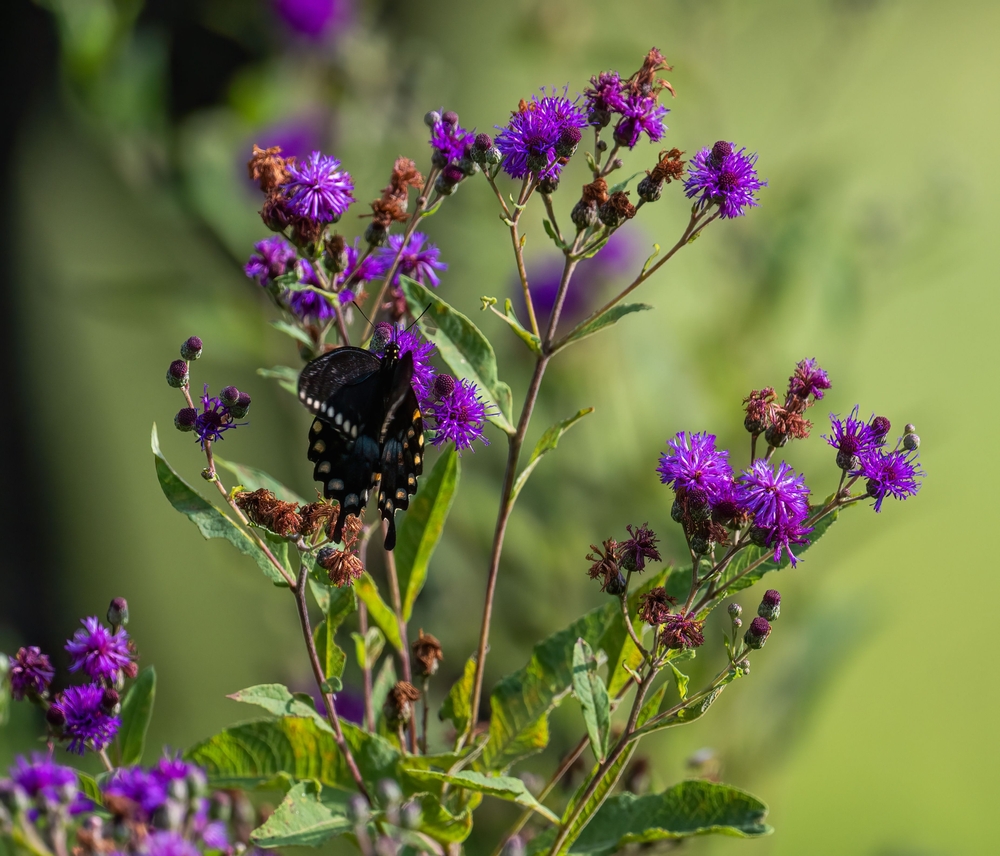
Ironweed offers bright purple clusters that stand tall across meadows and garden edges deep into fall. The rich nectar supply draws bees that need late-season support. Butterflies also visit these flowers in large numbers, especially during migration periods. Its bold color remains noticeable against fading grasses.
Ironweed thrives in moist soil and sunny spots, creating striking vertical accents. Its long blooming window makes it dependable when insects face dwindling choices. Even in cooler temperatures, the flowers stay upright and functional for pollinators. Ironweed adds vibrant energy to late-season plantings.
Sneezeweed
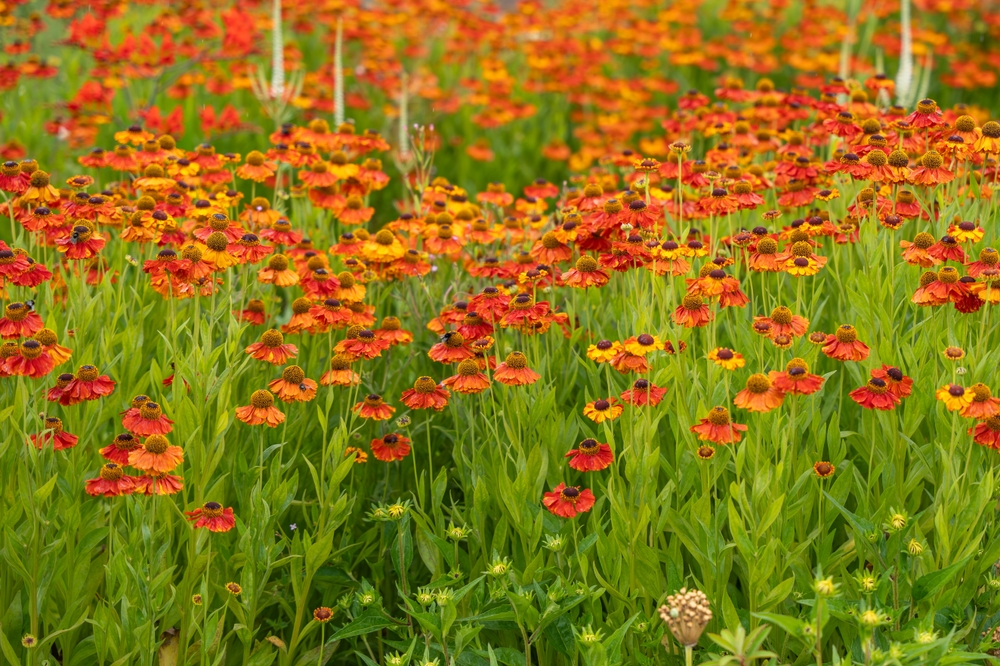
Sneezeweed produces cheerful golden blooms that appear late in the season and remain attractive for weeks. Bees visit frequently, taking advantage of the accessible pollen. Butterflies find the open flower shape easy to land on. The plant’s timing fills an important need when pollinators search for dependable food.
It thrives in sunny locations with moist soil, creating a lively display as autumn advances. The slightly raised center of each bloom makes feeding easy for insects. As temperatures drop, sneezeweed continues to provide color and nourishment. Its presence helps keep fall gardens active.
Aromatic Asters

Aromatic asters deliver beautiful blue-purple blooms that stretch into late fall. Their flowers remain open during cooler days, allowing bees to forage when other plants are slowing down. Butterflies use these blossoms during their final feeding runs of the season. The plant’s durability makes it valuable during temperature shifts.
Its low, bushy shape fits well in garden borders and meadow-style plantings. The leaves release a pleasant scent when touched, adding charm to fall spaces. Even after a light frost, many blooms remain usable for insects. Aromatic asters bring dependable late-season nectar to pollinator areas.
This article originally appeared on Avocadu.
